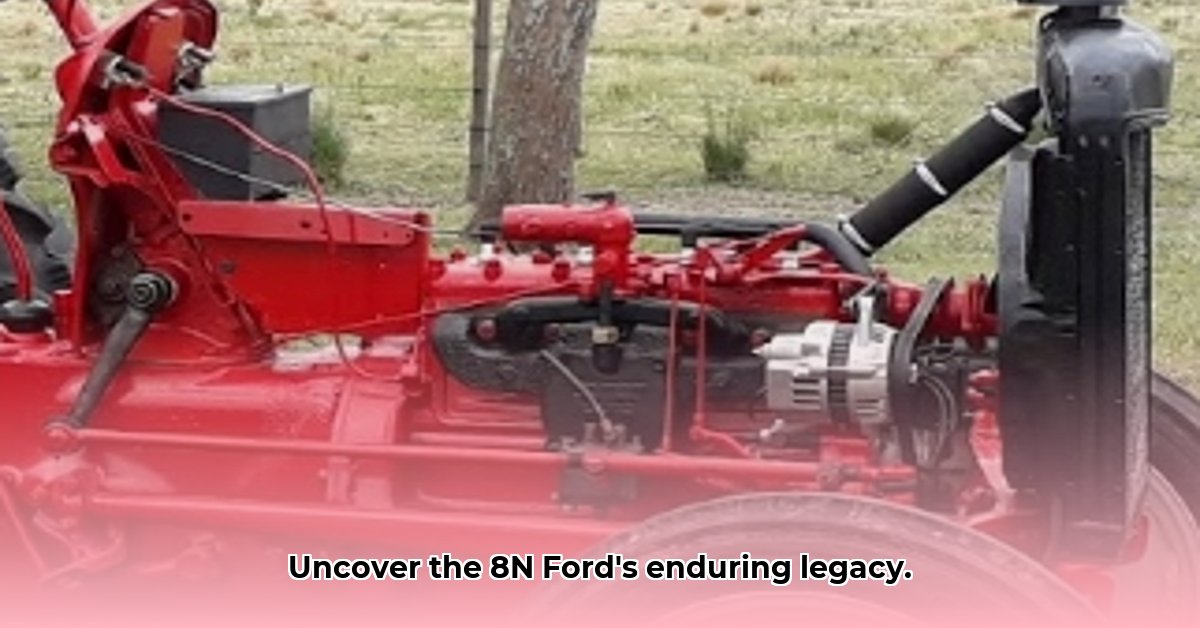
The Ford 8N tractor, introduced in 1947, revolutionized agriculture, becoming a ubiquitous symbol of post-war farming. Its impact, however, presents a complex legacy regarding sustainable agriculture, a legacy this article will explore by examining both its contributions to increased efficiency and its detrimental environmental consequences. For more detailed specifications, see the 8N engine specs.
The Rise of the 8N and its Impact on Agricultural Efficiency
Production of over 500,000 units solidified the 8N's place in agricultural history. Its relatively simple design, compared to its predecessors, made it both accessible and relatively easy to repair, reducing downtime and reliance on specialized mechanics. This accessibility contributed significantly to its widespread adoption, particularly amongst smaller farms. The increased efficiency offered by the 8N allowed farmers to cultivate larger areas and increase yields, a critical factor in meeting the growing food demands of a burgeoning post-war population. However, this efficiency came at a cost.
Analyzing Efficiency and Sustainability: A Historical Perspective
While the 8N undeniably boosted agricultural output, its impact on sustainability needs careful consideration within its historical context. The tractor’s design, a product of its time, lacked the fuel efficiency and emission controls that are standard in modern tractors. Its substantial fuel consumption contributed to resource depletion and, although the extent is difficult to quantify with precise historical data, likely had a significant negative impact on air quality. Applying modern sustainability metrics to this historical technology necessitates acknowledging the trade-offs between increased food production and environmental impact prevalent at the time. Was the increased food production worth the environmental cost? The answer demands a nuanced understanding of the historical context.
Comparative Analysis: Then and Now
Direct comparison of the 8N's performance to modern tractors necessitates a degree of careful interpretation due to the lack of readily comparable data from the 1940s and 1950s. However, it is clear that contemporary tractors boast significantly improved fuel efficiency and incorporate advanced emission control systems, marking a substantial advancement in sustainable agricultural practices. The increased complexity of modern tractors, however, may offset some of the benefits of increased efficiency due to higher repair costs and a greater reliance on specialized mechanics.
| Feature | 8N Ford Tractor Engine (circa 1947-1952) | Modern Tractor |
|---|---|---|
| Fuel Efficiency | Relatively low | Significantly higher |
| Emission Controls | None | Advanced systems, reducing emissions |
| Reparability | High (simpler design) | Varies greatly depending on complexity |
| Production Numbers | Over 500,000 | Varies greatly by model and manufacturer |
The Enduring Legacy: Lessons for Sustainable Agriculture
The Ford 8N's legacy is multifaceted. Its significant contribution to increased agricultural output is undeniable, playing a crucial role in global food production. Yet, its environmental impact, characterized by high fuel consumption and a lack of emission controls, serves as a stark reminder of the complexities inherent in technological advancements and the evolution of our understanding of sustainable agriculture. This historical perspective highlights the need for a balanced approach, striving for efficiency while mitigating environmental consequences. The 8N's story underscores the importance of continuous innovation and the development of truly sustainable agricultural practices. The ongoing research into biofuels and improved engine technology represents a direct response to the lessons learned from earlier iterations of agricultural machinery. Future research should focus on creating more complete datasets on the fuel consumption and greenhouse gas emissions of historical farming equipment to allow for more accurate and nuanced assessments of their environmental impact.
Key Takeaways:
- The Ford 8N significantly improved agricultural efficiency, boosting food production.
- Its high fuel consumption and lack of emission controls created a significant environmental impact.
- Modern tractors demonstrate significant advancements in fuel efficiency and emission reduction.
- Understanding the historical context is crucial when evaluating the sustainability of past agricultural technologies.